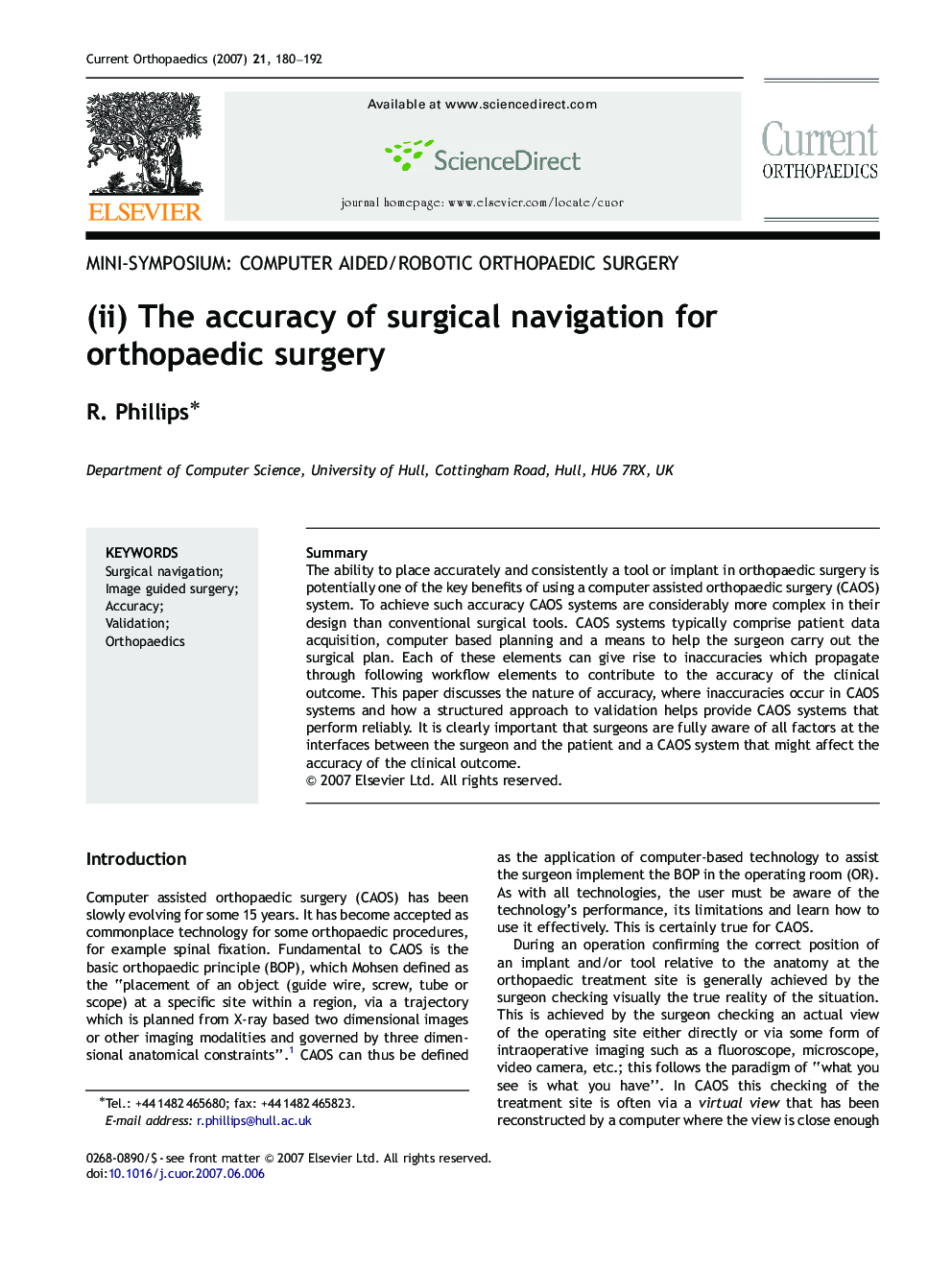| Article ID | Journal | Published Year | Pages | File Type |
|---|---|---|---|---|
| 4052841 | Current Orthopaedics | 2007 | 13 Pages |
SummaryThe ability to place accurately and consistently a tool or implant in orthopaedic surgery is potentially one of the key benefits of using a computer assisted orthopaedic surgery (CAOS) system. To achieve such accuracy CAOS systems are considerably more complex in their design than conventional surgical tools. CAOS systems typically comprise patient data acquisition, computer based planning and a means to help the surgeon carry out the surgical plan. Each of these elements can give rise to inaccuracies which propagate through following workflow elements to contribute to the accuracy of the clinical outcome. This paper discusses the nature of accuracy, where inaccuracies occur in CAOS systems and how a structured approach to validation helps provide CAOS systems that perform reliably. It is clearly important that surgeons are fully aware of all factors at the interfaces between the surgeon and the patient and a CAOS system that might affect the accuracy of the clinical outcome.
